Search Images
Browse Content (p. 61)

Image
A Cheyenne Artist's Depiction of the Battle of the Little Bighorn
The Battle of the Little Bighorn of June 25-26 1876, deerskin painting by an unknown Cheyenne artist, c. 1878.
National Museum of the American Indian, Washington, D.C.
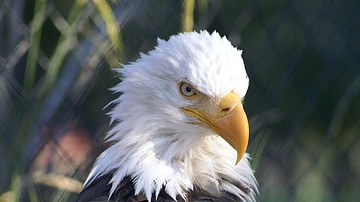
Image
Bald Eagle Plumage
North American Bald Eagle at the Alaska Wildlife Conservation Center. Photo by Nirajha, 2010.
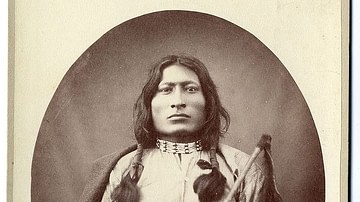
Image
Lakota Sioux Warrior One Bull
Lakota Sioux warrior and "sacred clown" One Bull (l. c. 1853-1947), brother of White Bull and nephew of Sitting Bull. Photograph by Dr. George P. Dix, Joshua Bradford Bailey, and John L. Mead, 1882. American Philosophical Society Digital...
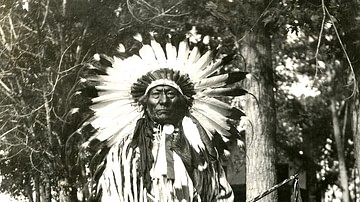
Image
White Bull
Hunkpapa Lakota Sioux warrior and chief White Bull (l. 1849-1947) in 1926 at the 50th anniversary of the Battle of the Little Bighorn. Photo by Earl Alonzo Brininstool.
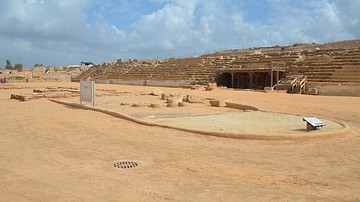
Image
Hippodrome of Caesarea Maritima
The hippodrome of Caesarea Maritima was built by Herod the Great (r. 37-4 BCE) for the inauguration of the city in 10/9 BCE. It was the venue of the Actian Games, instituted by King Herod in honour of the Roman emperor Augustus (r. 27 BCE...
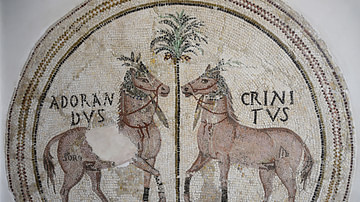
Image
Two Winning Horses from the House of Sorothus
Roman mosaic depicting two winning racehorses from the stud farm of Sorothus at ancient Hadrumetum (modern-day Sousse in Tunisia), end of the 2nd century CE. Sorothus was a rich stock breeder. His two horses with victory palms are identified...
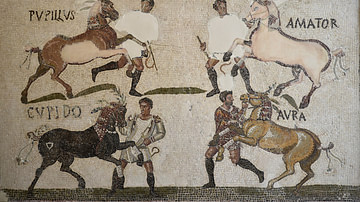
Image
Circus Factions Mosaic from Sousse
Roman mosaic representing a circus scene, 3rd century CE. It depicts four horses identified by name and their respective charioteers from the four different factions, each indicated by a colour: Pupillus represents the blue faction (factio...
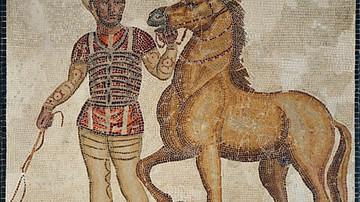
Image
Charioteer from the Red Faction
Roman mosaic depicting a charioteer and horse from the Red faction (factio russata), 3rd century CE. The charioteer wears a short decorated tunic in the colour of the stable, a leather helmet, and leather strips around the chest, arms, and...
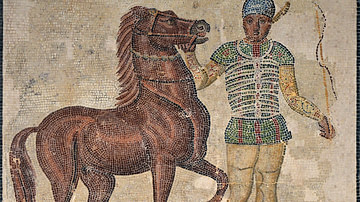
Image
Charioteer from the Green Faction
Roman mosaic depicting a charioteer and horse from the Green faction (factio prasina), 3rd century CE. The charioteer wears a short decorated tunic in the colour of the stable, a leather helmet, and leather strips around the chest, arms...
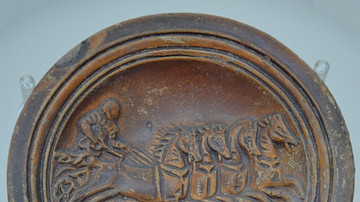
Image
Oil Lamp with a Chariot Scene
Oil lamp decorated with a four-horsed chariot at speed. Made in Italy, c. 40-70 CE.
The British Museum, London.